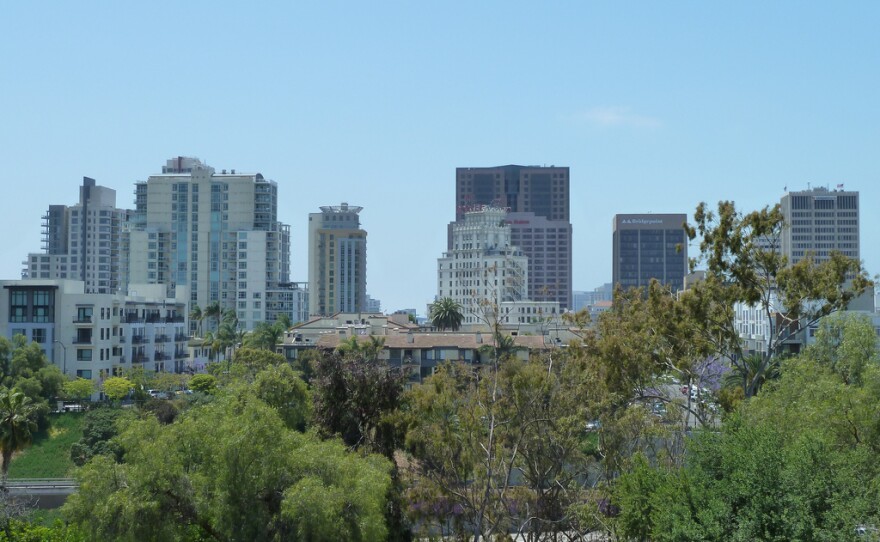Between the beaches, bays and parks, there’s a lot of political ground to cover when it comes to San Diego’s environment. And Mayor Jerry Sanders Sanders is very clear about his position.
“I’ve never been what you’d call a rabid environmentalist,” he said. “But I think we’ve been practical about what we’ve tried to do. And think we’ve gotten a lot accomplished.”
Sanders said his focus is on environmental decisions he thinks will also make good business sense. He points to the formation of CleanTECH San Diego, a non-profit aimed at promoting green businesses in the region, which works with more than 800 companies. He’s highlighted solar projects around San Diego, which was rated as the state’s top solar city in 2009. This past summer saw several announcements from the mayor regarding electric cars in San Diego. Sanders said his critics can not argue with the fact that San Diego will have the largest grid for all-eclectic vehicles in the country.
“I don’t think they can quibble with the fact we’ll have 1,500 charging stations, the most robust infrastructure,” he said. “That we’re part of a smart city grant that looks at us and determines how to deploy those in other cities in the future.”
But his critics maintain they can find plenty of fault with Sanders. Chief among their complaints is how Sanders reacted to Indirect Potable Reuse, or what’s indelicately been called Toilet to Tap. In 2007 Sanders came out against the plan, which calls for purifying sewage water and returning it to the drinking water system. Former City Councilwoman Donna Frye said Sanders’ resistance to reusing water cost San Diego time and money.
“It was really shameful the lack of scholarship, when I would hear him talk about the toilet-to-tap or whatever you want to call it,” she said. “It was mind numbing as far as the lack of desire to even understand the issue.”
Sanders has come to accept the idea, helping kick off the pilot testing project last June. Still, environmental attorney Marco Gonzalez, who has clashed with the mayor about the effects of fireworks on San Diego bays, said Sanders should have been a compass and not a weather vane in the debate.
“Frankly it’s the mayor’s job to recognize good policy, good projects and get behind them,” he said. “And at the end of the day, I hate to say it, but our water supply is ten times more important than our Chargers stadium or our Convention center. And he just doesn’t seem to get that.”
Sanders said he does get that. And he said his position has always been consistent, he wanted to make sure the science was good before supporting the project.
“The biggest decision I’ll ever make as mayor isn’t about a Chargers stadium, it’s not about a convention center, and it’s not about anything else,” he said. “It’s about reusing water, because it affects every person in the city of San Diego.”
Yet Frye said the mayor’s fallen behind on other environmental issues too, preferring to play it safe. And she criticizes Sanders’ penchant for a new Chargers’ stadium, which led him to support AB 900. The state law fast tracks lawsuits that challenge the environmental impact of large projects. Frye also said the merger of the city’s planning and development services departments earlier this year was an awful decision that will lead to less oversight and poor land use.
“Environmental issues are very important to San Diegans, and I just haven’t seen a real pro-environmental stance,” she said.
Despite his critics’ observations, Sanders said he has always tried to strike a balance between protecting the air and water without making new rules and regulations too onerous for local businesses. And he said many of his issues improve both business and the environment, like his push to open a third border crossing to reduce the emissions from thousands of idling cars and trucks waiting to cross. Sanders saidhis message of practical environmentalism is beginning to resonate.
“I think that if you talk about it often enough people pay attention and they start doing those things,” he said.
Sanders doesn’t have much time to keep talking. He’s got just over a year left in office, which means he has just over a year to carve out his environmental legacy for good.







